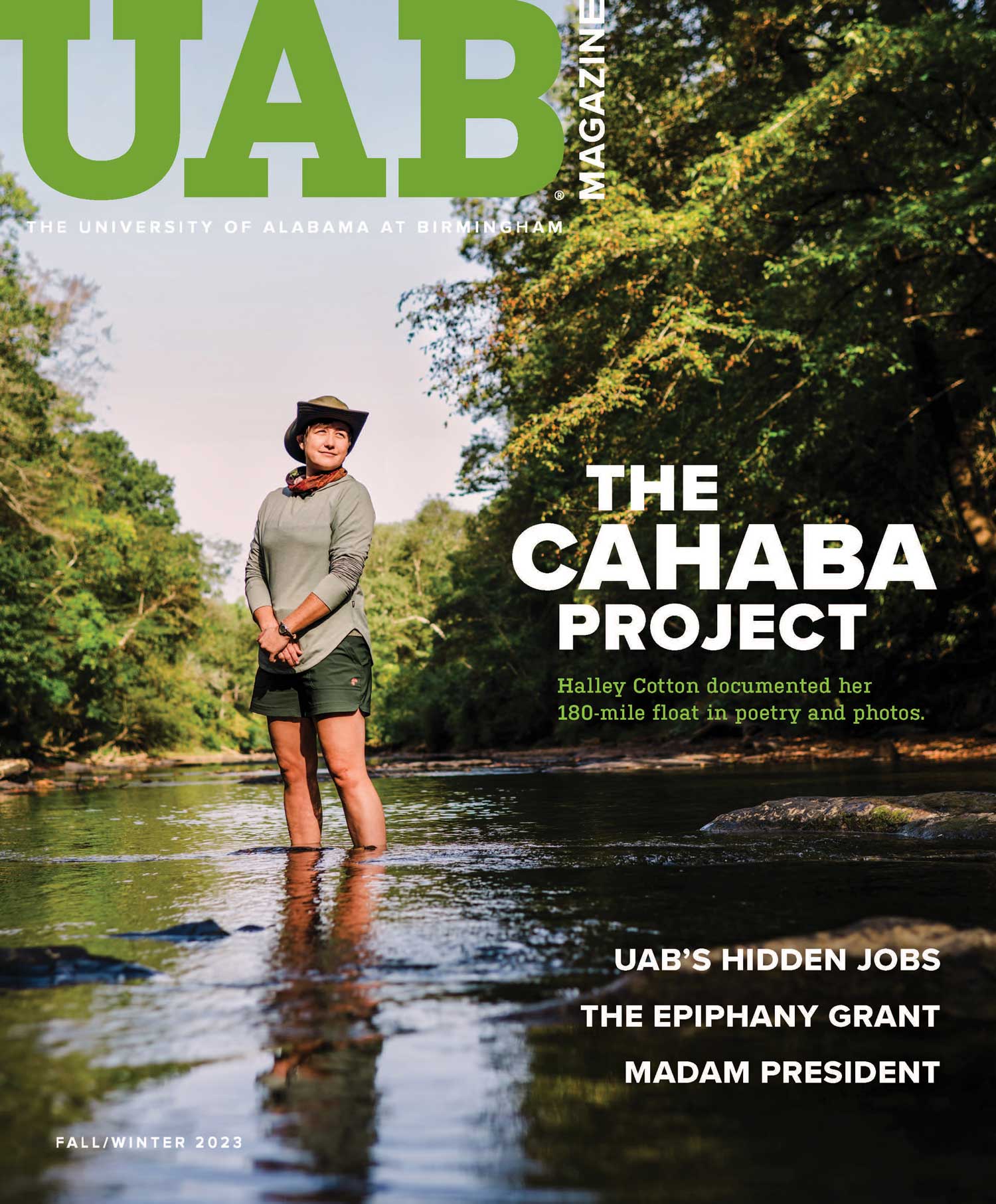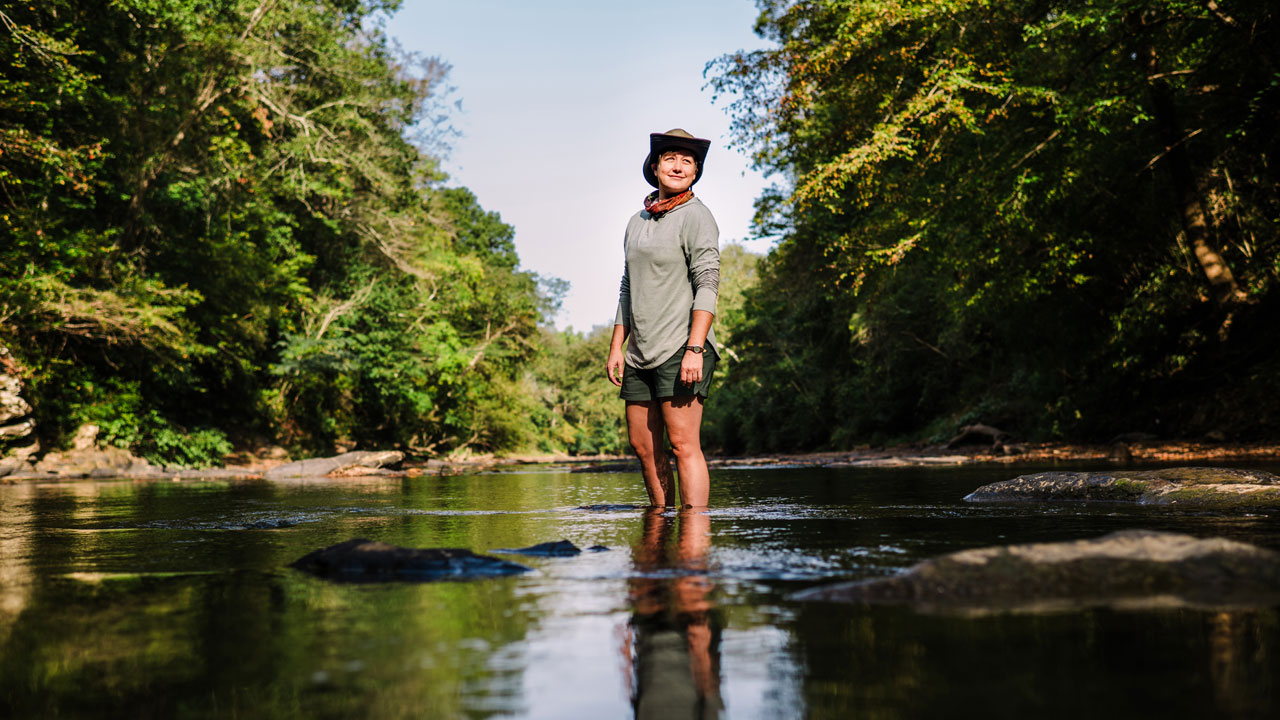
When I first thought about kayaking the whole of the Cahaba River, the idea was a passing fancy: a wouldn’t-it-be-nice-if sort of dream. But then I saw a glimmer of opportunity when filling out a grant proposal for a poetry fellowship with the Alabama State Council on the Arts. What if I were to kayak the entire river and produce a sort of multimedia travelogue of photography and poetry? I pitched the project and promptly forgot about it. Then in an unexpected turn of events, I got the grant.
The Cahaba River is 194 miles long, spans five counties, and provides drinking water to 60 percent of central Alabamians. It springs out of the ground between Trussville and Springville and oxbows its way across some of the most biodiverse landscape on the continent before meeting up with the Alabama River just outside of Selma. A gem of ecology, the river is captivatingly gorgeous and home to many rare and endangered species. It’s also radically different from beginning to end. The Upper Cahaba is shallow and rocky as it crosses the trace tailings of the Appalachian Mountain range, while the Lower Cahaba widens out into deeper and sandier stretch through the Coastal Plains region.
In November 2022, I began mapping out a float plan that would take me 180 contiguous miles, navigate five dams, and somehow come to terms with late spring weather in Alabama. I had figured the trip would take me anywhere from 9 to 14 days, but I didn’t know for sure because I’d never done anything like this before. I’d never overnighted on a kayak trip, though I had done some weekend backpacking to the middle of nowhere. As soon as I had my plan, I had to wait for the perfect moment. The timing had to be just right as I was dodging thunderstorms and watching water levels. On May 25th, I set out on rushing flood water from the Grant’s Mill kayak launch; 11 days later and battling a powerful headwind, I finally crossed from the Cahaba into the Alabama River at the Old Cahaba Archeological Park in Selma.

This whole trip was triggered by a whim, yet it was life changing. The draw of the river is magnetic; it pulls people together. What started as a solitary project quickly grew into a community-oriented endeavor. I blogged my way through preparation for the trip and at every step found support and encouragement for the adventure. So many people sought me out to share with me their own experiences with the Cahaba, offering up their stories and their excitement.

Even though I’m mostly off the river now with fall semester in full swing, I’m working to bring the Cahaba into my classroom with a pilot of one of the new Blazer Core Curriculum classes: Writing in Birmingham. We’re currently partnering with the Cahaba River Society to update and repackage the curriculum for their Shane Hulsey CLEAN Environmental Program. My own introduction to the Cahaba was with a middle school trip with the Cahaba River society as a part of CLEAN. So, everything feels full circle.
I’m writing about the trip more in detail at TheCahabaProject.substack.com.



